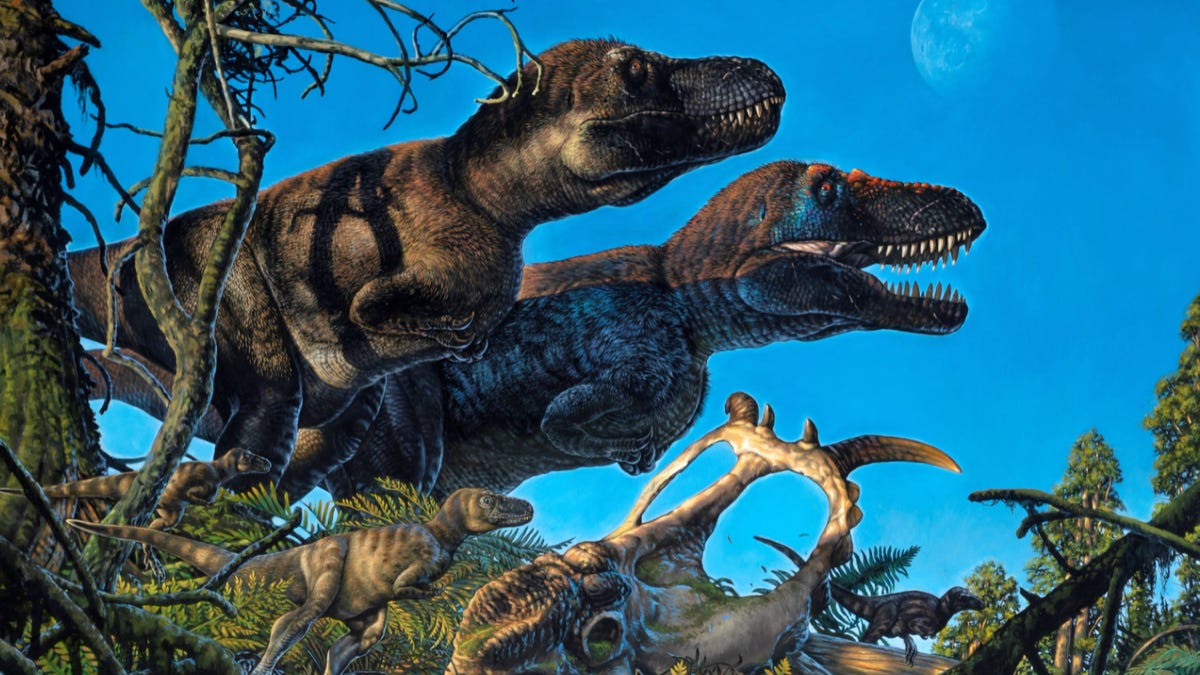Tyrannosaurs not only roamed the freezing, dark Arctic -- they thrived there
New research reveals that the gigantic carnivores, and many other dinosaur species, sometimes called the Arctic home.

Tyrannosaurs are now thought to have lived in the Arctic.
When you think of dinosaurs, you tend to think of tropical climates. Sauropod necks peering through dense foliage, Spinosaurs lurking near rivers like oversized alligators, or gigantic Tyrannosaurs in desolate, rocky plains snapping bones in their gaping jaws.
You don't tend to imagine them in the Arctic, suffering through months of freezing weather conditions and total darkness.
But new research, published in the journal Current Biology, suggests dinosaurs didn't just live in the Arctic, they also nested there.
Patrick Druckenmiller from the University of Alaska Musuem of the North and co-author Gregory Erickson from Florida State University -- alongside many enlisted students -- helped uncover hundreds of baby dinosaur bones, including tiny teeth from unhatched dinosaurs. Some of the species found include hadrosaurids (duck-billed dinosaurs), ceratopsians (horned dinosaurs and leptoceratopsians), thescelosaurs and carnivores (tyrannosaurs, troodontids, and dromaeosaurs).
Yep, there were tyrannosaurs living in the Arctic. Let that fester in your imagination for a spell.
An assortment of baby dinosaur teeth.
"These represent the northernmost dinosaurs known to have existed," said Patrick Druckenmiller. "We didn't just demonstrate the presence of perinatal remains--in the egg or just hatched--of one or two species, rather we documented at least seven species of dinosaurs reproducing in the Arctic."
It wouldn't have been easy for dinosaurs to subsist under such conditions. At the time, the Arctic had a year round average temperature of just 6 degrees Celsius (around 40 degrees Fahrenheit). It was also subject to around four months of winter darkness under freezing conditions. Not the best place to raise baby dinosaurs.
For that reason, it's only recently researchers even considered the idea that dinosaurs could be found in the Arctic, let alone nest there, explains Druckenmiller.
"To then find out that most if not all of those species also reproduced in the Arctic is really remarkable," he said. "We have long been asked, 'Have you found any eggs?' To that we have, and still answer 'no.' But, we have something much better: the actual baby dinosaurs themselves."
The findings also seem to suggest these dinosaurs lived in the Arctic all year which, Gregory Erickson suggests, could be evidence that helps further one of the biggest dino debates: Were they warm or cold-blooded?
"Year-round residency in the Arctic provides a natural test of dinosaurian physiology," he explains. "Cold-blooded terrestrial vertebrates like amphibians, lizards, and crocodilians have yet to be found, only warm-blooded birds and mammals -- and dinosaurs. I think that this is some of the most compelling evidence that dinosaurs were in fact warm-blooded."

